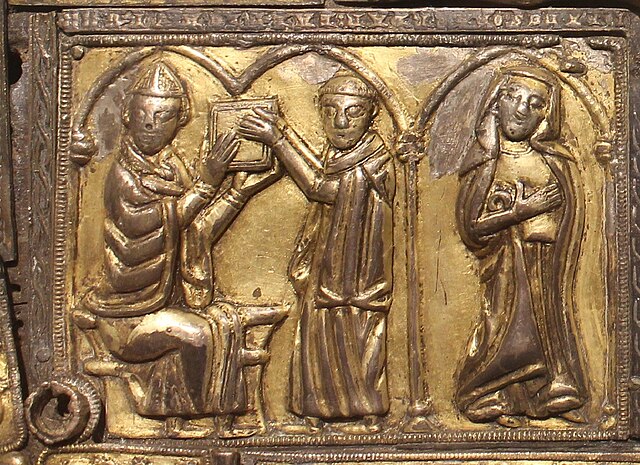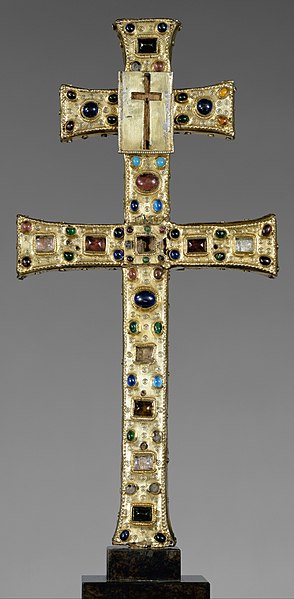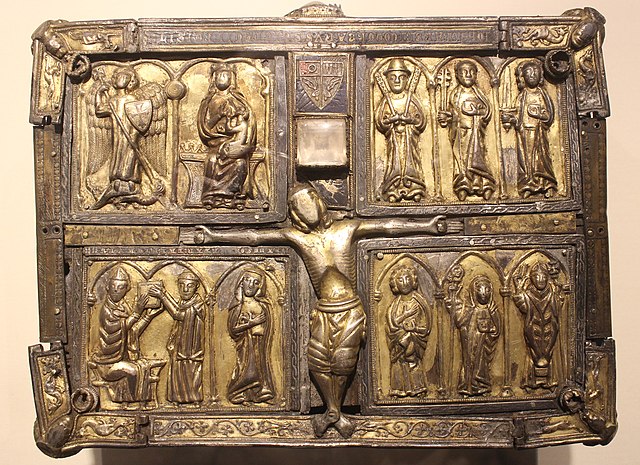The Domnach Airgid is an 8th-century Irish wooden reliquary. It was considerably reworked between the 13th and 15th centuries and became a cumdach or "book shrine", when its basic timber structure was reinforced and decorated by elaborate silver-gilt metalwork. Its front-cover was enhanced by gilded relief showing Jesus in "Arma Christi", alongside depictions of saints, angels and clerics, in scenes imbued with complex iconography. It is thus considered a mixture of the early Insular and later International Gothic styles.
14th century front cover
Side panels on the short right-hand side
The Domnach Airgid presented by St Patrick to St Macartan in a mise en abyme type later known as the Droste effect
Upper left hand panel of the front cover, showing the Archangel Michael and Mary
A reliquary is a container for relics. A portable reliquary may be called a fereter, and a chapel in which it is housed a feretory or feretery.
Reliquary Shrine, French, c. 1325–50, The Cloisters, New York
Inside the shrine of St. Boniface of Dokkum in the hermit-church of Warfhuizen in the Netherlands. The little folded paper on the left contains a bone fragment of Saint Benedict of Nursia, the folded paper on the right a piece of the habit of St. Bernard of Clairvaux. The large bone in the middle (about 5 cm in length) is the actual relic of St. Boniface.
Reliquary Cross, French, c. 1180
Domnach Airgid, Irish, 8th–9th century, added to 14th century, 15th century, and after








